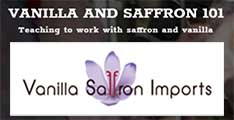by Sierra Adare and Tasiwoopa Api, Wild West Magazine
Etulain taught at Idaho State University (1970-79) and the University of New Mexico (1979-2001), where he edited the New Mexico Historical Review and directed the Center for the American West. He took early retirement in 2001 and returned to Portland, Ore., to research and write. His 466-page Beyond the Missouri: The Story of the American West(University of New Mexico Press, Albuquerque, 2006), which he worked on for five years, is his 45th book.Along with historian Glenda Riley,he edited a series of books including By Grace & Grit; Chiefs and Generals; The Hollywood West; Wild Women of the Old West; and With Badges and Bullets. Recently he talked to Wild West about his writing.
Why did you decide to write an overview of the American West, and how does it differ from earlier overviews?
I began researching an overview narrative history of the American West from the Bering Strait to Bill Gates well before retirement. I wanted to author a book that appealed to general readers but that could also be useful in classrooms. I was more interested in writing about intriguing people and lively events than in producing a sharply analytical book. And I wanted to cover the story of the West, the whole shebang.
Do you feel your long teaching career and earlier writing projects prepared you for writing such a book?
Yep. For more than 30 years I taught Western history at all levels—from introductory courses to doctoral seminars. I purposely taught several different courses to force myself into new subjects and into recent publications. Most of my 40-plus books deal with the varied cultures of the American West. Some focus specifically on historians and novelists, others on ethnic and religious experiences.
You write that this is a center-of-the-road book and call yourself a “radical middler.” Please explain.
As a “radical middler,” I follow the credo of Western writer Wallace Stegner. He argued that a reflective, middle-of-the-road position was often more difficult to achieve but more valuable in the long run than radical or reactionary paths far to the left or right. I want readers to see the complexities of the Western past, mistakes and achievements.
Manifest Destiny has taken a beating from revisionist historians and others. How do you view that concept?
Manifest Destiny is much like human ambition: We want persons to be ambitious, but “overweening ambition,” as the bard told us, causes many problems. Cultures want to achieve, to be successful; but when they do so at the expense of other societies, as was the case in much of the 19thcentury West, they head in destructive directions. Nonwhite societies suffered.
You describe Kit Carson as a “culture broker.”Exactly what does that mean,and who else might fit that label?
“Cultural brokers” are cultural go-betweens. On one side Kit Carson, following orders, fought and killed Indians and Hispanics. But he also married two Indian women and had a very happy marriage and large family with a Hispanic woman. Although the Navajos hated Carson, the Utes thought of him as an ideal Indian agent. He crossed boundaries between white and non-Euroamerican cultures. Englishman Dr. John McLoughlin, Hispana Doña Tules, Comanche Quanah Parker, Chinese woman Polly Bemis and author Wallace Stegner crossed ethnic and racial, class and ideological chasms to serve as culture brokers. I find them very appealing figures.
You write that the main purpose of your history is to tell about the changes and complexities central to understanding the American West. Please elaborate.
I am convinced that continuous change and persisting complexity, more than any other variables, are central for understanding the history of the American West. The impacts of the Gold Rush, World War II and mushrooming Las Vegas graphically illustrate the shaping power of change in the West, whereas ethnic and racial differences, urban and rural configurations and increasing transnational networks reflect the ongoing complexities of the region.
The West is known for its open spaces,yet you say it “remains the most urban region of the United States.” How so?
Since the 1930s, more than half of Western residents have lived in urban areas (defined as incorporated places of more than 2,500 people). Census reports demonstrate that the West has been the most urban U.S. region for much of the time after 1940. But those facts collide with widespread fictional and filmic images of a frenetic West filled with wide-open spaces. We do have huge open spaces between these urban places, as in Nevada, Texas and other areas—all the more reason to embrace historian Walter Prescott Webb’s description of the West as a region of “urban oases.”
The last five chapters in your book deal with the 20th century and beyond.Why?
The 20th-century West has attracted much less attention than the 19th century—and even earlier centuries. But the 100-plus years since 1900 display the region’s largest populations, its evolving social complexities and its expanding political and economic power. The past century is also when moviemakers, writers, artists and other purveyors of popular culture have had their largest impact on regional, national and even international audiences. The post-1900 American West remains the great unknown region; it shouldn’t be.
Who are some of your favorite Western characters?
I’m drawn to a bevy of Western characters. The unheroic, mythic-driven types like Billy the Kid and Calamity Jane intrigue me, the exaggerated stories about them as much as the provable facts. I’m also interested in leaders, including those leaders whose ideas I don’t follow: Padre Martínez, Brigham Young and Sister Aimee McPherson. I think, too, of Chief Joseph and Wallace Stegner as two wonderfully emulative figures.
Have your views of the West changed through the years?
In my three score and nearly 10 years, I’ve moved from a rural to an urban West; from a ranch kid to an academic; and from one Western subregion to several others. Those experiences exposed me to much I did not know and have indeed changed my views about the American West—not so much to dispose of one idea to embrace another as to find ways to accept complexities and differences of experiences into a larger, more comprehensive viewpoint on the West.
What are you working on?
I am now beginning a study of Abraham Lincoln and the West, and I’m still working on a long-delayed biography of Calamity Jane. I haven’t given up either on a little book on Crazy Horse and Custer. Truth be told, I plan to ward off any who come for me, telling them I need to finish the footnotes of my next Western book before they take me away.
(Originally published in the February 2008 issue of Wild West. To subscribe, click here)



 Enviar a un amigo
Enviar a un amigo Añadir comentario
Añadir comentario








